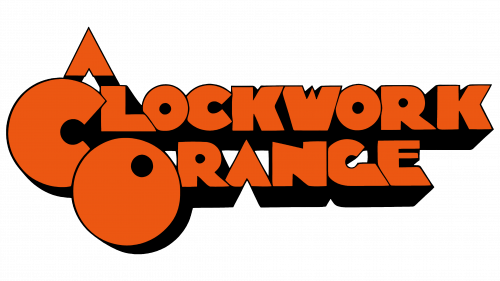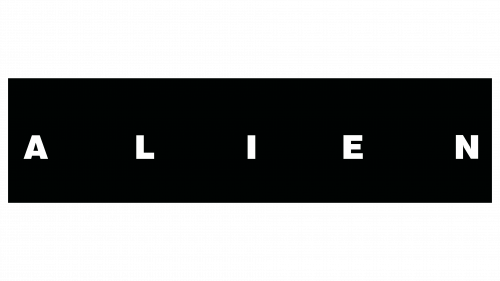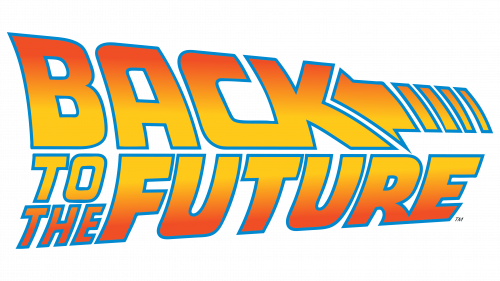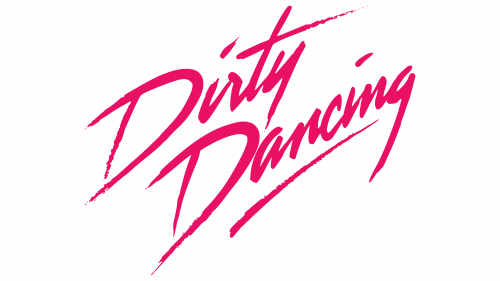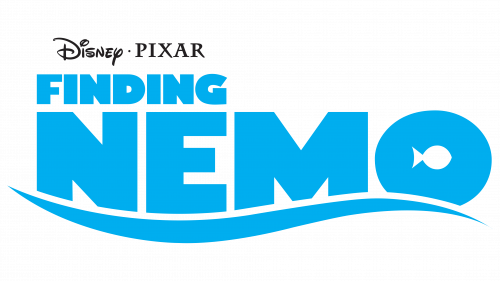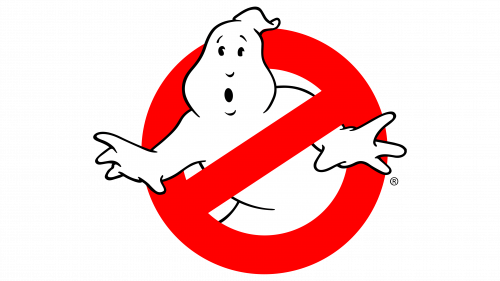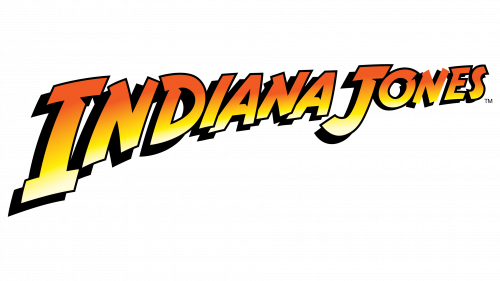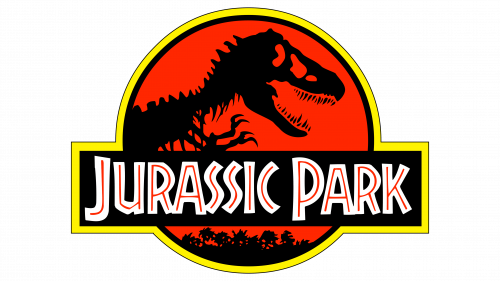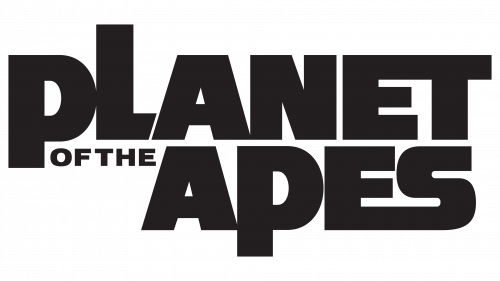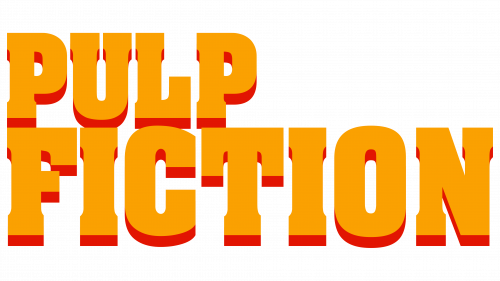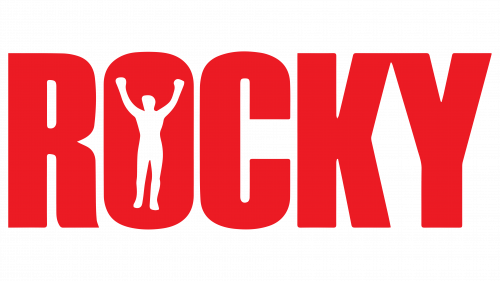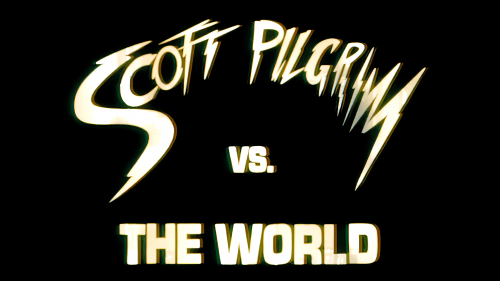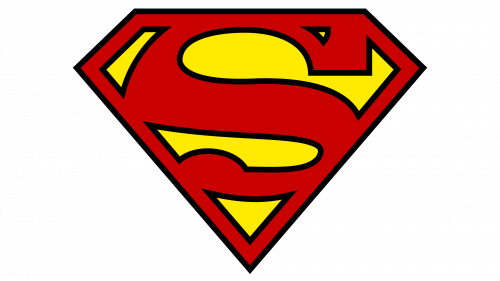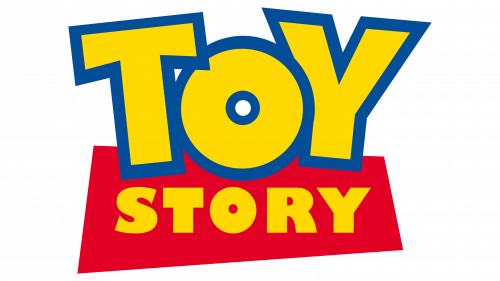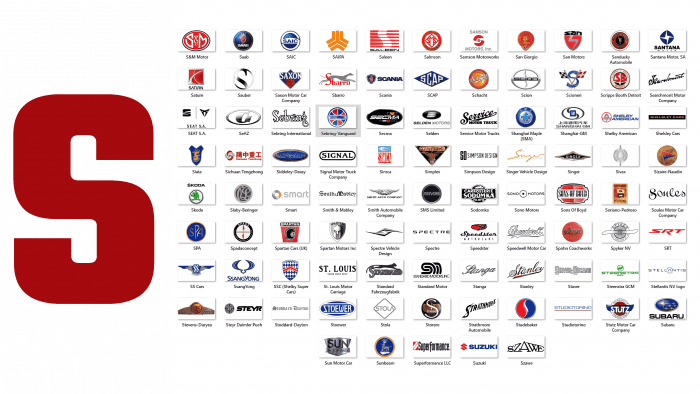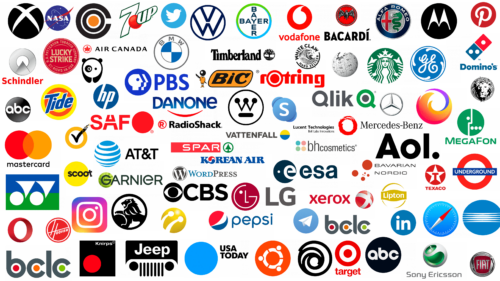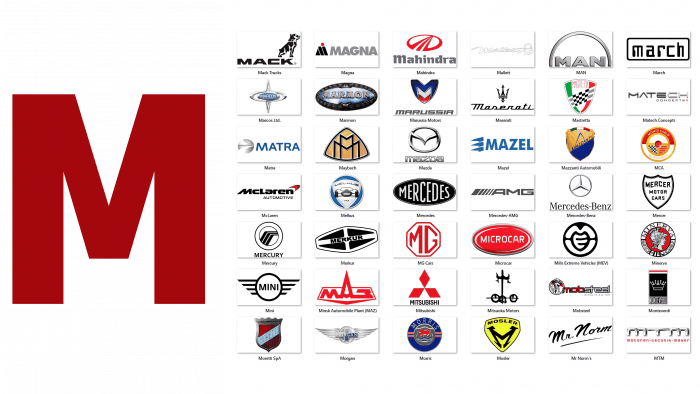Native movie logos have undoubtedly influenced the history of cinema, similar to such well-known symbols as the Nike swoosh or the Coca-Cola font. The James Bond logo is mesmerizing with its art deco style, while the Harry Potter emblem envelops the viewer with a sense of magical wonder. The Avengers symbol also radiates power.
A well-chosen logo placed on a movie poster or title screen acts like a magnet, attracting the attention of viewers. The power of logos is such that their influence often extends beyond the movie screen. They make their way onto paraphernalia and even become permanent symbols on the bodies of devoted fans in the form of tattoos.
Studying the most memorable movie logos provides insight into the intricacies of their design and their ability to resonate with audiences. Logos often use colors, fonts, and imagery that match the tone, theme, and message of the film. For example, the soft luminescent glow often found in sci-fi movie logos suggests otherworldly adventures, while the bold and tough fonts in action movie logos suggest adrenaline rushes.
Movie logos are not only aesthetically pleasing, but they often serve as shorthand for the main idea or essence of the movie. A well-designed logo speaks volumes, conveying the atmosphere, genre, and even the emotional impact of the movie it represents. An effective logo embodies the essence of the film, serving as a marketing tool and often becoming a cultural artifact.
Introducing the most iconic movie logos
Movie logos and corporate trademarks share common goals in conveying targeted messages, although they differ in style and application. Large companies carefully design their corporate symbols to create an emotional connection with consumers and showcase their unique selling propositions. Similarly, movie studios use logos to embody the core ideas of a movie – its theme, content, and genre.
A well-designed logo is a symbolic summary that allows you to quickly understand the essence of the movie it represents. A successful logo uses a complex combination of design elements – shapes, typography, principles of color psychology – to convey emotional and informational load in a split second. For example, the emotional resonance of visual icons such as The Wizard of Oz and Alien differs significantly, illustrating the power of design to shape audience expectations.
Many film logos have become firmly embedded in popular culture, standing the test of time and remaining as memorable as the cinematic experience they represent. The longevity of a movie logo often extends beyond the movie screen. For example, another area where the powerful potential of a movie logo is manifested is merchandising. Clothing, toys, and other logo merchandise generate additional revenue and strengthen the connection between the audience and the movie.
Designers and directors work together to ensure that the logo matches the artistic intent of the movie and has commercial appeal.
The best movie logos of all time
Defining the top movie logos of all time generates differing opinions due to varied tastes and experiences. Certain film emblems stand the test of time and embed themselves in popular culture. Such logos attain an almost mythical status, and their impact extends beyond the confines of the cinema screen to shape merchandise, memes, and sometimes even societal norms.
A Clockwork Orange
Presented to audiences through the lens of director Stanley Kubrick and writer Anthony Burgess, A Clockwork Orange has garnered attention as a boundary-pushing dystopian film. Its content is far from the frivolous impressions one might get from a logo design, making it particularly intriguing in both the realms of film and design.
The movie logo uses a distinctive typeface that, at first glance, seems appealing and cheerful. The font has a bright orange color with a voluminous shadow effect, which gives it a cheerful and welcoming feel. This seeming affability contrasts sharply with the stark themes and imagery of the movie.
The dissonance between the optimistic look of the logo and the bleak narrative of the movie creates an irritating effect but makes you think. It adds another layer to the complexity of the movie, drawing the viewer in with a seemingly mismatched visual cue.
Alien
Ridley Scott’s 1979 sci-fi horror film Alien, based on a screenplay by Dan O’Brien, remains a pinnacle in the annals of cinematic history. It successfully intertwined elements of horror, curiosity, and exploration to create a compelling narrative that has survived time.
Recognizing the film’s unprecedented contribution to cinema, the Library of Congress celebrated Alien in 2002, declaring it a significant cultural artifact. The film received a coveted spot on the National Film Registry, cementing its legendary status.
The “Alien” logo, in its deceptive simplicity, embodies the essence of the movie. The vast negative space surrounding the typeface enhances the sense of unease and mystery. The vast emptiness seems to echo the desolation and uncertainty of space, paralleling the theme of the movie. The typography itself, with its sparse and elongated symbols, evokes a sense of eeriness, reflecting the tension and fear in the movie. The minimalism in the logo design suggests that sometimes, the understated or underwhelming can be more frightening than the explicit details.
Avengers
The Avengers emblem figures prominently when discussing iconic superhero symbols in cinematic history. The continued presence of this emblem is a testament to the enormous success and cultural impact of the Avengers franchise.
Each member of the Avengers ensemble has their own visual representation. However, they are all united by the brightly colored round “A” logo, a symbol of unity and collective strength. More than just an alphabet, this logo embodies the essence of a team that is purposefully moving forward. Over time, this logo has become more than just a logo but a symbol of heroism, teamwork, and cinematic milestones.
Back to the Future
Back to the Future holds a special place in the annals of science fiction cinema, representing both innovation and nostalgia. The film premiered in 1985 under the direction of Robert Zemeckis, and its plot, characters, and groundbreaking special effects immediately created a sensation. The film’s impact extended beyond the theater, catalyzing the creation of themed rides and interactive attractions that allow fans to delve deeper into the fantasy realm.
A key element contributing to the instant recognition of this cinematic marvel is its emblematic logo. This symbol is a word mark in which an unusually shaped arrow is inscribed. The arrow subtly yet effectively captures the essence of reversing time and returning to key moments, echoing the central theme of the movie and pointing to the left.
The appeal and memorability of the logo are enhanced by the carefully chosen color scheme. The combination of fiery shades – red, orange, and yellow – with a cold blue outline gives the design dynamism and liveliness.
The font used in the logo plays a key role in shaping its identity. The choice of a rounded, sizzling font gives the brand symbol a distinctive vintage feel, which is in keeping with the era to which the movie is dedicated.
Dirty Dancing
Dirty Dancing, released in 1987, holds a special place in cinematic history as a groundbreaking romantic drama. More than just entertaining, this movie changed the perception of movies dealing with the art of dance and the very essence of dance. Despite the seemingly minimalist design, the logo associated with this movie is rich with emotion and narrative.
At first glance, it appears that the font of the logo is made with a real brush. This design choice evokes a sense of raw artistic style, symbolizing the unrefined emotion and sincere interaction at the heart of the film’s plot. It’s about dance and the candid human emotions and connections manifested within it.
The color palette used to create the logo enhances its resonance. The consistent use of hues such as purple and pink is not just a random choice but a conscious symbolic implication. Traditionally associated with passion, love, and romance, these hues foreshadow the heartfelt and poignant moments intertwined in the dance scenes and relationships shown in the movie.
E.T.
E.T. the Extra-Terrestrial remains an unforgettable name in cinematic history. Both alone and in conjunction with the iconic image of a child riding a bicycle against the moon, its logo undoubtedly represents the film’s profound legacy. One intriguing element of this logo is the dichotomy between the rough “E.T.” font and the more polished serif font below it.
This difference in typeface is not just an aesthetic choice but a deliberate representation of the merging of two different entities. It hints at the main theme of the movie: the extraordinary connection between the otherworldly entity and the little boy, two people from completely different worlds who establish a unique bond.
The choice of color plays an important role in the symbolism of the logo. The predominantly monochrome black-and-white scheme emphasizes the contrast between E.T.’s alien origins and his earthly encounters. Alternate versions using shades of blue and white bring to mind the vast expanse of space and its mysteries.
The “E.T.” logo serves as a visual gateway, preparing viewers for a cinematic journey that immerses them in a world of friendship, discovery, and the ineffable bonds that unite different beings.
Fight Club
The Fight Club movie logo is a masterclass in subtlety and understatement, just like the movie itself. The movie based on Chuck Palahniuk’s novel, released in 1999, has firmly entered cinematic history as a cornerstone of psychological drama. Equally iconic is the logo accompanying the movie, which resonates with fans and first-time viewers alike.
The logo may seem simple, with its bold font stretched across two lines. However, a closer look reveals the intricacy of the letters: their juxtaposition and overlapping give the impression of layering and interconnectedness, hinting at the complex narrative and relationships in the movie.
The hardness and clarity of the typeface create an aura of strength and assertiveness, reflecting the rough and tough tone of the movie. The minimalistic design also evokes a sense of curiosity, encouraging the viewer to look deeper, just as the movie’s plot continually reveals its secrets.
Finding Nemo
In 2003, the joint efforts of Pixar and Walt Disney Pictures created the animated film “Finding Nemo,” which took its rightful place in the annals of movie history. After its debut, the film captivated audiences around the world and set a record by becoming the highest-grossing animated film of its time. The film’s remarkable storytelling and animation were validated by numerous Academy Awards.
The visual representation chosen for the Finding Nemo logo is a flawless affirmation of the movie’s nautical theme. Beneath the name “Nemo,” a curvilinear line resembling a wave subtly hints at the oceanic backdrop that plays a central role in the story. The design frills don’t end there. The inner part of the letter “O” is originally replaced by a stylized figure of a fish, which organically fits the water theme of the film in the logo.
Forrest Gump
Forrest Gump, released in 1994, was an exceptional comedy-drama film. Backed by Paramount Pictures, the movie was a huge commercial success and became one of the highest-grossing films in history.
The Forrest Gump movie logo is not immediately eye-catching. Using a straight serif font combined with a purple and white color scheme, it is more eye-catching than eye-catching. This choice of design elements has a purpose. The casual simplicity of the font creates a sense of authenticity and credibility to the movie’s narrative. The color palette complements this idea: white brings thoughts of purity and simplicity, while purple gives the logo a refined and serious feel.
Ghostbusters
Introduced to audiences in 1984, Ghostbusters quickly became a cinematic classic. The film’s groundbreaking nature was not limited to its creation: it spawned a number of sequels, including sequels, animated shows, and interactive games, cementing its place in popular culture.
The inimitable “prohibition” sign, present in the film’s emblem, is the centerpiece of its corporate identity. This particular design is chosen for more than just aesthetic reasons. It serves as a visual embodiment of the movie’s core message of combating and containing the supernatural. The playful illustration of a ghost wrapped around the sign sets the tone for the film, incorporating elements of humor, adventure, and supernatural sensations.
Godzilla
First appearing on the big screen in 1954, Godzilla has taken its rightful place in cinematic history. Emerging from Japanese folklore, this titanic monster, called the “kaiju,” has been the centerpiece of countless screen adaptations. Its enduring appeal is confirmed by the Guinness Book of World Records, which recognized it as the longest-running film franchise.
Godzilla’s emblem represents power and menace. The choice of bold capital letters evokes a sense of grandeur and dominance. The subtle texture adorning some of the letters adds depth and tactile sensations, hinting at the monster’s rough and unpredictable nature. The crimson hue of the logo is a vivid reminder of the chaos and destruction the monster leaves behind. The scale of the font reflects Godzilla’s colossal stature, emphasizing its presence and the awe it inspires.
Harry Potter
Since its inception, the Harry Potter movie logo has taken a quintessential place in the annals of movie history. Time has done little to diminish its significance; indeed, its iconic status has only grown, and it has become firmly embedded in modern pop culture. Although the visual representation of the wordmark has undergone changes in color and texture as the franchise has evolved, the underlying design of the lettering has remained the same.
The logo, borrowed from the literary works that served as the basis for the film adaptation, features a customized wordmark that seems to exude a certain charm. This design choice gives the impression that the letters are suspended in the air, reminding us of the magical world they represent.
But of all the artistic elements used in the design, one stands out the most: the lightning bolt. It is organically inscribed in the letter “P” and is a vivid reminder of the characteristic scar on Harry Potter’s forehead.
Indiana Jones
The Indiana Jones logo associated with the famous adventure movie series remains a constant in the entertainment industry even after the release of the new series. Its design elements are distinctive, conveying the spirit of adventure and the exciting narrative of the movie. The logo uses a bright color scheme that echoes the energetic tone of the film.
The font used in the logo is another important component designed to evoke interest and emotion. The text decreases in size from right to left, creating an impression of movement and dynamism. This design technique subtly conveys the relentless action and adventure that is the hallmark of the Indiana Jones film series.
The combination of vibrant colors, distinctive typography, and subtle design nuances serves as a memorable brand identifier that effectively communicates the essence of the franchise. In this way, the logo has become an integral part of the cultural cachet associated with Indiana Jones.
James Bond
A hallmark of the James Bond franchise are exciting opening episodes that don’t just catch the eye but immerse the viewer in a multi-sensory experience. Each part of the movie features an original song, often written by the lead artist, that becomes an integral part of the movie’s image. These songs are not just songs but aural encapsulations of the mood, theme, and spirit of each movie, creating a complete experience for the viewer that transcends auditory and visual perception.
The logo and title cards of the franchise’s films have undergone repeated aesthetic revisions, evolving in parallel with changes in popular design styles and cinematic technology. The central “007” emblem remains unchanged. The font is intentionally slanted to create an atmosphere of dynamism and urgency inherent in the lifestyle of the secret agents depicted in the series. The letter “7” in the emblem is shaped like a gun, serving as a concise but powerful visual cue to the espionage, danger, and action that are the essence of these films.
The James Bond films are models of brand consistency, even as the brand undergoes change and evolution. The constant use of original music in the visually exciting opening scenes is a prime example of how the franchise continues to update its approach while maintaining its core identity. The “007” emblem, with its slight slant and pistol-shaped “7,” is a succinct expression of this identity, embodying visually the speed, adventure, and constant movement toward the unknown that defines every part of the film.
Jaws
Among a number of iconic movie emblems, the Jaws logo stands out as an example of simplicity with deep meaning. While the design may appear simple at first glance, its nuances tell a more complex story.
The font, characterized by bold lettering, is not just a design choice; it is filled with meaning. The tightly spaced letters create a sense of immediacy and impending danger, reflecting the tension and suspense inherent in the movie. This design subtly conveys the lurking menace of a fearsome marine predator before the viewer is even immersed in the depths of the movie’s narrative.
The color palette of the emblem further enhances this feeling. The deliberate choice of deep red is symbolic and serves more than just aesthetic purposes. This shade, often associated with danger and bloodshed, makes it clear that this is not a fairy tale for the faint of heart or for young viewers looking for fun water adventures.
Nuanced typography creates additional layers of context. For example, the stylized letter “J” resembles a fishing hook, emphasizing the nautical theme of the film. It’s a gentle but effective hint at the ocean environment and the dangers that comprise much of the movie’s thrilling action.
Jurassic Park
The Jurassic Park franchise is based on the iconic movie logo, instantly recognizable to audiences around the world. Released in 1993, Steven Spielberg’s film won numerous awards and Academy Award nominations, prompting a number of successful sequels. With each subsequent movie, new elements have been added to the logo, but it has retained its core features and remains remarkably memorable.
The logo designed by Chip Kidd was influenced by his visit to the Museum of Natural History. The emblem is a vibrant combination of colors that is eye-catching and suggestive of the adrenaline-pumping adventures that await viewers. In some places, the emblem radiates an aura of danger, which corresponds to the drama and tension inherent in the series.
The Jurassic Park logo is distinguished by its ability to capture the essence of the franchise in a single image. The combination of color, design, and story creates an emotional and intellectual connection to the film’s theme: the rebirth of extinct creatures and the danger associated with it.
The Jurassic Park franchise is an example of how a well-designed logo can be an integral part of creating and maintaining brand identity across decades and across series. The series keeps viewers interested by keeping the logo consistent but allowing subtle updates while maintaining the original theme and message.
Planet of the Apes
The movie Planet of the Apes, released in 1968, holds a significant place among famous science fiction films. The origins of this cinematic marvel lie in Pierre Boulle’s 1963 novel. The creative minds at 20th Century Fox took the trouble to adapt this literature into a visual spectacle, enhancing its appeal with an inventive logo design.
The emblem has a distinctly wordy design, carefully arranged in two lines. What draws attention is the unusual placement of the words “of the” next to the letter “P,” which results in a noticeable elevation of the letter “L.” This deviation in design adds an unexpected twist, arousing the curiosity of viewers.
Some letters intertwine and merge, giving the impression of an intertwined and fluid visual image. This juxtaposition of letters on top of each other hints at the complex relationships and intricate story behind the plot of the movie.
The logo acts as a visual gateway, beckoning viewers to delve deeper into the multifaceted themes and layers of the story. Distinctive typography and designs capture the essence of the movie, offering a preview of the thought-provoking content that awaits.
Pulp Fiction
The movie “Pulp Fiction,” directed by Quentin Tarantino, is a hallmark of modern cinematography. Starring such talented actors as Samuel L. Jackson, the movie impressed audiences and collected numerous awards. But the movie’s influence is not limited to its story and acting; it also extends to its branding, particularly its distinctive logo.
The 1994 film’s logo transports viewers back to the 1960s and 1970s, setting the stage for the eclectic storylines the movie is known for. The retro atmosphere is carefully crafted through various design elements. The bright, eye-catching colors on the title cards immediately bring to mind the cultural aesthetics of previous decades.
Typography is another element that contributes to the nostalgic aura of the logo. A large, prominent font is used, complemented by pronounced shadows that give depth and seriousness. The composition serves as a visual introduction to the movie, subtly preparing the viewer for the roller coaster of interconnected stories, characters, and dialog.
Rocky
The Rocky logo associated with the iconic film series that debuted in 1976 is not just a visual identifier but an emblem that embodies the spirit of the movie and its protagonist, Sylvester Stallone. Its design is based on a strict word mark in block style. This choice of font conveys the strength and resilience of the hero, Rocky Balboa, actually being a continuation of the thematic essence of the movie.
The logo variants are in the black and white or red and white color scheme. Each shade was carefully chosen to evoke a certain emotion. While black and white creates a sense of timeless classics, red and white brings energy and passion to the visuals.
Perhaps the most eye-catching part of the logo is the figure placed in the “O” of the word “Rocky.” This figure with arms raised in triumph serves several functions within the context of the logo design. It represents a pivotal scene in which Rocky achieves a significant personal victory.
Scott Pilgrim Vs. The World
The logo of the movie “Scott Pilgrim vs. the World” immediately grabs attention and draws viewers into its unique universe. The wordmark, which seems to pulsate, implies rhythm and dynamism. It is not just a static image; it symbolizes the energy and dynamics of the film.
The font used in the logo is characterized by bold and a bit rough. This design resonates with the youth, which ensures that the movie connects with the target audience. It is evident that all aspects of the logo, from the striking design to the bold typeface, reflect the main theme of the movie – music and youthful rebellion.
The palpable sense of movement in the logo design hints at the musical focus of the movie’s plot and reflects the fast-paced action sequences and battles.
Star Wars
The Star Wars movie, created by George Lucas in 1977, has become a multi-generational cultural phenomenon. Its influence is not limited to the narrative and characters: even elements of Star Wars branding and design have achieved iconic status. Of particular note is the font of the franchise’s name, which has remained virtually unchanged since the series’ inception.
This sans-serif font incorporates unique elements such as the elongated “S” and the elongated line on the “R,” making it immediately recognizable. Despite its simplicity, the mark effectively conveys the franchise’s core themes of speed, innovation, and discovery. It conjures up images of space travel, futuristic technology, and new worlds to be explored while maintaining a timeless appeal.
Unlike other franchises that may change their visual elements frequently, the consistency of the Star Wars font contributes to its identity and longevity. Each time this typeface flashes across the screen, it evokes a specific set of emotions and expectations stemming from the audience’s longstanding interaction with the series. It acts as a silent but powerful signal, preparing viewers for the upcoming adventures and experiences in the Star Wars universe.
Superman
Appearing in 1948, Superman quickly became what many consider to be the quintessential American superhero. Over the years, his emblem has remained unchanged, undergoing only minor design changes in various film adaptations.
Over the 75 years of its existence, the character of Superman has undergone many changes in plot and appearance. One element has remained constant throughout these transformations: the symbolic “S” shield. This symbol, which takes center stage in the brand’s logo, captures the essence of the superhero and all that he stands for.
The emblem is a testament to Superman’s enduring legacy and is among the most recognizable symbols in the world.
The Godfather
In the annals of film history, The Godfather is a monumental movie, marked not only by its plot and characters but also by its groundbreaking visual elements. One such element is the movie’s logo, which has become an integral part of its identity. American graphic designer Neil Fujita created a unique typeface specifically for the movie, which is known today as The Godfather.
The title card for the movie captivates the audience with its eye-catching design. One of the striking elements is the “puppeteer” motif, which depicts strings stretching from the last letters of the word “Godfather.” This graphic solution is a powerful metaphor that captures the essence of control, manipulation, and power – themes that permeate the plot of the movie.
The Lord of the Rings
The Lord of the Rings franchise undoubtedly has one of the most memorable logos in film production. Throughout the series, while the basic design has remained the same, subtle additions have been made to it, adapted to each specific installment.
This timeless logo carries the aura of ancient tales, which is emphasized by the subtle elaboration of the letters and bold vintage font. This choice of design is not accidental; it reflects the essence of epic movie plots. The logo evokes a sense of deep legends, enchanting magic, hidden secrets, and grandiose quests waiting to be discovered.
The intricate design details hint at the complex world-building, intricate storylines, and deep history of the movies. The use of earth tones and the silhouette of the legendary ring in some versions subtly remind viewers of the main theme around which the narrative revolves.
The Matrix
The Matrix movie title card is an inventive design that seamlessly fits the theme of the movie. This cinematic masterpiece, released in 1999, carved out a unique niche for itself in science fiction and launched an exciting series.
The logo accompanying the Matrix movies does not conform to conventional design norms. It looks like a typical serif font but is far from conventional. Its characters, with seemingly periodic distortions, evoke a sense of digital glitching, subtly hinting at the virtual reality of the movie. These intentional imperfections in the font convey the essence of the plot – a world where reality and simulation blur.
The dynamic design not only hints at the technological theme of the movie but also reinforces the tense and unpredictable nature of the narrative. The choice of green for the logo, reminiscent of early computer monitors, adds another level of connection to the digital world depicted in the series.
Toy Story
The Toy Story film series, a joint creation of Pixar and Walt Disney Studios, is the epitome of animated cinema. Since its initial release in 1995, this cinematic marvel has gone on to have sequels and a unique place in world cinema.
Every aspect of the Toy Story series, from the story to the visuals, has been meticulously crafted. One of the most iconic elements of the series is undoubtedly its animated logo. The delightful combination of primary colors sets the tone for the logo, drawing the viewer into its vibrant world. The lively and cheerful typography further emphasizes its appeal, making it especially appealing to younger viewers.
But it is not only the younger generation that is fascinated by this logo. Its design evokes a sense of nostalgia, making many adults dive into memories of childhood and simpler times. The emblem represents more than just a movie; it symbolizes the universality of childhood memories, adventures, and the age-old bond between toys and their owners.
Learning from famous movie logos
In the movie industry, the importance of a spectacular logo is unrivaled. These carefully crafted emblems don’t just represent a movie or studio; they embody its essence and set the mood for the viewer. Over the decades, movie studios have collaborated with cutting-edge graphic designers to create iconic emblems. The famous logos discussed above testify to the profound impact of a well-designed emblem.
Such logos are not just graphic elements; they convey the story even before the first scene begins. By setting the tone, they give the audience an idea of the genre, mood, and character of the movie. More importantly, they evoke emotion, fostering a connection between the viewer and the movie experience ahead.
It’s amazing how these concise constructions can play a crucial role in a huge filmography. They become synonymous with the movie and remain in the audience’s memory long after the credits roll. Logos that signal an exciting adventure or the tenderness of a heartwarming story significantly shape perceptions and create lasting impressions.
